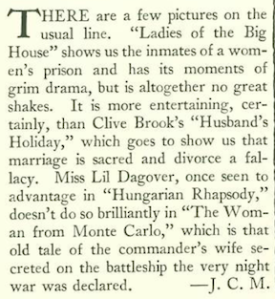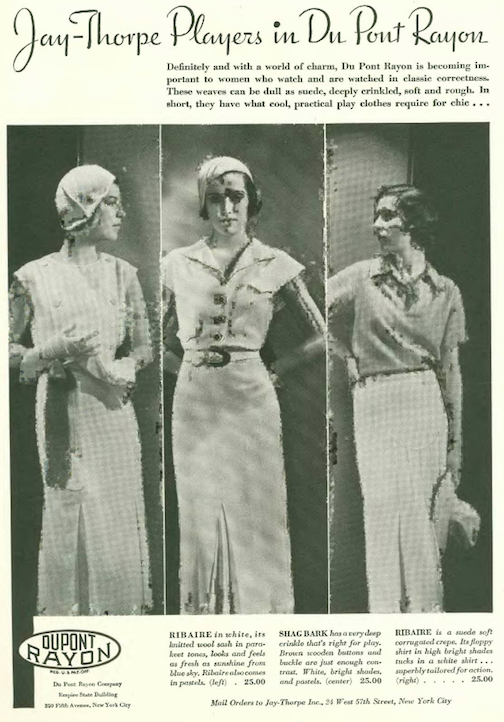The name of this post comes from one of my favorite television series, Babylon Berlin, a lavishly produced German neo-noir drama that takes place during the final years of the Weimar Republic, or precisely where we are in the timeline of this blog.

The tumultuous Weimar years of the 1920s and early 30s represented Germany’s initial flirtation with democracy, an experimental age at once filled with post-war angst and libertine ways, and this was especially true in Berlin where nearly every vice could be plied along its streets and alleyways and in countless clubs and cabarets. It was the setting for a decade of political turmoil, with communists (rival Bolsheviks and Trotskyites) to the left and national socialists (later Nazis) to the right, and in the middle a fledging democracy that ultimately could not hold the center. Janet Flanner, The New Yorker’s Paris correspondent, paid Berlin a visit just one year before Adolf Hitler would seize dictatorial power.

In this excerpt, Flanner saw life continuing at an oddly normal pace despite the hardships and the political tension that boiled behind the façade:



Toward the end of her article, Flanner noted that “Berliners are busy making a new race,” which is not a reference to Hitler’s “master race” (that would come later) but rather to a new generation overtaking the old. The final lines of this excerpt, however, suggest there might be trouble ahead…

The party abruptly ended with Hitler’s takeover of the government in January 1933. The images below said it all:

* * *
Masses’ Mass Media
“The Talk of the Town” pondered the symbolism of the Daily News Building—from the inscription above its entrance to the place names on its massive lobby globe—which seemed to celebrate its readership, namely the common people.

* * *
Dem Bones
Art critic Murdock Pemberton paid a visit to the Stieglitz Gallery to check out the latest works by Georgia O’Keeffe. He found that her themes were moving from the urban landscape of New York to the bleached simplicity of the Southwestern desert:

* * *
Hyde-bound
Film critic John Mosher found much to like about Frederic March’s performance in Dr. Jekyll and Mr. Hyde, and so did critics and Academy voters who bestowed a Best Actor award on the actor.

Mosher found, however, that other pictures playing at the time left much to be desired…

* * *
Modern Methods
Early in his writing career Richard Lockridge penned a series of comic sketches for The New Yorker, many of them featuring the characters Mr. and Mrs. North, who would inspire a 26-book series of detective novels. The Norths had yet to make an appearance, but here Lockridge had some fun with the makers of Chevrolets, who used a new-fangled method to promote their product. Excerpts:

* * *
From Our Advertisers
The Annual National Automobile Show at Grand Central Palace kicked off the new year with a stunning lineup of new cars, but General Motors separated itself from the pack by exhibiting its wares at the new Waldorf-Astoria Hotel…I believe this unsigned illustration is by Peter Arno (note “Walrus” in background)…
…The New Yorker’s advertising department reaped the benefits of the annual show, the Jan. 9 issue replete with ads from various companies…the makers of the Buffalo-based Pierce Arrow — a top-of-the-line luxury car — added a downscale version with a “New Eight” and deeply discounted their prices (which were still well above economy models offered by others)…
…the Depression would put an end to Pierce Arrow by 1938, but rival Lincoln would manage to hang on thanks to their own new “8” and the largess of parent Ford Motor Company…the Lincolns shown here are actually priced higher than the Pierce Arrows, $4300 for the 12 (vs $3185 for the PA 12) and $2900 for the 8 (vs. $2385 for the PA 8)…
…a bit more down the ladder we have venerable Oldsmobile, alas no longer with us (removed from GM’s lineup in 2014)…
…and a few more rungs down we have the DeSoto (a Chrysler product) and its “sleek” new radiator that was the talk of the auto show, and admired here by “Jimmy Flagg” (aka illustrator James Montgomery Flagg, perhaps best known for his 1917 Uncle Sam poster with the caption “I Want YOU for U.S. Army”)…the DeSoto was a real bargain, priced at under $700…
…and here are a few ads from companies long gone…like Pierce Arrow, Auburn (top left) struggled to sell its upscale cars during the Depression…however, the makers of another upscale brand, Packard (bottom right), were able to survive by favoring tried and true designs over gimmicky yearly changes…Hupmobile (top right) was known for its innovations, but a decision to build more expensive cars in the late 1920s put it into a bad position for the Depression-era market, and the company folded by 1939…when Hupmobile was on its last leg, it partnered with the ailing Graham-Paige Motor Company (bottom left), another company known for great designs, but combining two failing companies in this case yielded one larger failing company, and Hup and Graham went down together…
…the clever folks at Buick were way ahead of the others in marketing savvy, emphasizing an attractive, confident woman at the wheel of an unseen car, tapping into a previously untapped market (tobacco companies were busy doing the same)…
…as we see here from the folks who pushed the Chesterfield brand—in this ad aimed at the growing market of women smokers, you don’t see the carton, but what you do see are people waxing philosophical about smoking, quality smoking, that is, and it’s no mistake that the woman is sitting on the arm of the chair, receiving this “wisdom” from her husband…
…even when a man isn’t present, Chesterfield still perched the woman on the arm of the chair, as seen in this ponderous New Yorker ad from the previous year…
…and then you have Spud—the direct approach—yes dammit, do something, man!…your “mouth happiness” is at stake, so follow a schedule that keeps you puffing every waking minute…
…and we move on to the fashion world, where this new-fangled “Talon Slide Fastener” is keeping women’s corsets zipped up, except the vulgar, slang word “zipper” hasn’t quite made it into the fashion lexicon as of 1932…
…and this other new invention—”Rayon”—is “becoming important to women who watch and are watched in classic correctness,” but believe me, no old money deb would ever allow anything artificial to touch her delicate hide…
…we continue into the cartoons in the fashion mode with one of Helen Hokinson’s “girls” getting a makeover…
…Mary Petty, on the other hand, is keeping an eye on the younger crowd…
…we move on to Barbara Shermund and the old money gang, wary of astrologer Evangeline Adams‘ thoughts on the ailing stock market…
…one of their fellows was having troubles of his own in those troubled times, per William Steig…
…and Denys Wortman took us to the other side of that window, and the dreams of a better life…
…urban realist Reginald Marsh gave us all a splash of cold water…
…Isadore Klein, on the other hand, presented a domestic scene with particular relevance these days…
…and another domestic scene from the brilliant James Thurber, in which the pistol once again makes a timely appearance…
Next Time: Dream Cars…





























When I was a little boy I had already noticed there was a big difference between people who bought the Times or the Herald Tribune and people who bought the Daily News
LikeLike
Frank Miller’s Basin City – a place that only began representing itself honestly when it dropped those first two letters to become Sin City – is a town where even the priests say things like: “Ask yourself if that corpse of a slut is worth dying for.” It’s so hopeless and mean that the grime can’t be contained in classic urban cauldrons such as “projects” and docks: even the forests and farms surrounding it crawl with menace. Everywhere is black and white and red all over. The New York of Alan Moore’s Promethea is initially also portrayed as a kind of Babylon, but there is at least some redemption here as it is transformed, straight along biblical lines, into an ectopian paradise – “a heavenly radiant city”. The pages glow with electric blues, golden sunsets and sex.
LikeLike